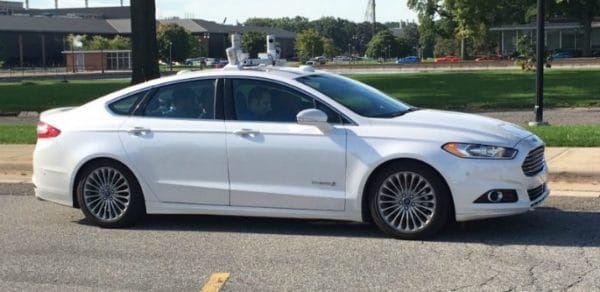The Truth About Autonomous Driving

I tried it and it’s awesome.
You know that two hours you spent this summer on the interstate crawling along through construction sites, passing fender benders and behind tractor trailers struggling up a hill? That’s two hours of your life that regulators would like to give back to you.
The US government announced this week its guidelines on autonomous driving and as good as this gift is, it opens up a potential Pandora’s box of misunderstanding. Don’t fret. It’s not as confusing or damning as it might sound. I’ve had a chance to ride in the fully autonomous Ford Fusion as well as drive many miles using semi autonomous features. I’m pretty excited for autonomous driving and, until we get to full autonomy, semi-autonomous cars will lighten your workload.

Autonomous parking lets you see what the system is doing while it’s parking the car. Photo: Ford
Semi vs fully autonomous: What’s the difference?
This is just what it sounds like: semi-autonomous features each take over some of the driving functions, and when they all work together it’s full autonomy. These features are on cars on the market now and include:
- Lane keep assist notes the lines on the road and keeps you inside them
- Adaptive cruise control follows the vehicle ahead of you and adapts your speed to keep you from colliding
- Blind spot monitors, which keeps tabs on cars on either side of you
- Systems that read lane markings, road signs, speed limit signs and more
- Crash mitigation which watches traffic ahead and beside you and brakes automatically if the system detects a crash is imminent
- Other systems such as electronic brake force distribution, traction control and more help the car to safely maintain higher speeds and protect you and the car if it stops suddenly
Fully autonomous: Do you still need to be behind the wheel?
Yes. The car does most of the work but you’re in charge. You set your destination and let the car drive you where you want to go. I tried this out at a demonstration in Ford’s fully autonomous Fusion at the company’s headquarters in Dearborn, Michigan and it was pretty amazing.
First, we did have a driver (and an engineer, since it was a demonstration). The driver set our destination, put the car in gear and then, the Ford Fusion got underway: it drove out of the parking lot and on a one-mile loop around public roads on the Ford campus. The car stopped for pedestrians, stop signs and traffic lights. The car also could detect pedestrians approaching crosswalks and tell once they’d crossed the street and cleared the crosswalk, so it was super safe for everyone. It made left turns, waited for approaching traffic to clear and even knew the correct protocol when we met other drivers at a four-way stop. Score one for autonomous driving.
Semi-autonomous driving: You can buy it now
Many cars on the market now have semi autonomous features. Virtually every car maker offers this technology and I highly recommend insisting on it in your next car. Learn to use these features and you’ll be prepped and ready for when cars are truly autonomous.

The adaptive cruise control setting, in the lower left corner of the driver information screen, shows that it’s set and the distance between you and traffic ahead that the car will keep. Photo: Scotty Reiss
Which systems should I focus on first?
Start with adaptive cruise control. This is a lead-follow process: Your car will follow the car ahead, slow when it slows, stop when it stops and restart when it restarts as long as you’re not stopped for more than three seconds; if traffic is stopped for more than three seconds, you have to tap the gas or the ‘resume’ button and the system starts up again.
Adaptive cruise control can be set at speeds over about 25 MPH and either keep you at your speed or slow you with traffic.
I’ve used this feature in many cars, including the Ford Fusion we drove on the test track along with the autonomous cars. The Fusion Eco we drove performed perfectly.
But for those times when traffic doesn’t get up to 25 MPH to set adaptive cruise, Volvo has a system called Pilot Assist. Set Pilot Assist and the car will ebb and flow with traffic (it even prompts you if traffic is slow), coming to a full stop and restarting again when traffic starts up. If you exceed 30 MPH the system will prompt you to switch over to adaptive cruise control. You can’t use Pilot Assist to go through traffic lights as it needs a vehicle to follow, but for stop and go highway traffic it’s amazing.

The Volvo’s Pilot Assist message lights up when the system is in use. Photo: Estee Reiss
What else do I need to know?
Learn to also appreciate lane keep assist, blind spot monitors, voice commands and in car apps such as texting, Apple Car Play and others. As you get used to these features you’ll start to get a feel for what it will be like when cars actually drive themselves, and you get so much of your life back.

Side mirror on the 2016 Ford Expedition showing the Blind Spot Information System. Photo by Deb Steenhagen for AGirlsGuidetoCars
I was Ford’s guest for the autonomous car demonstration, with travel and accommodations provided. Research and opinions are all my own.
